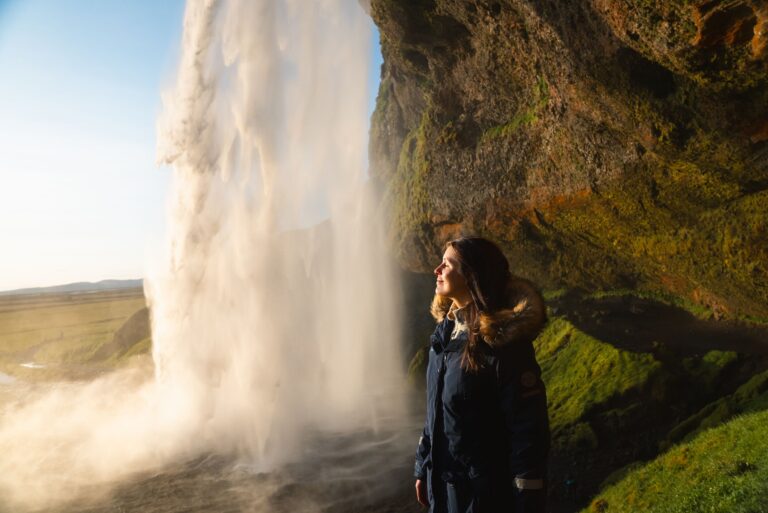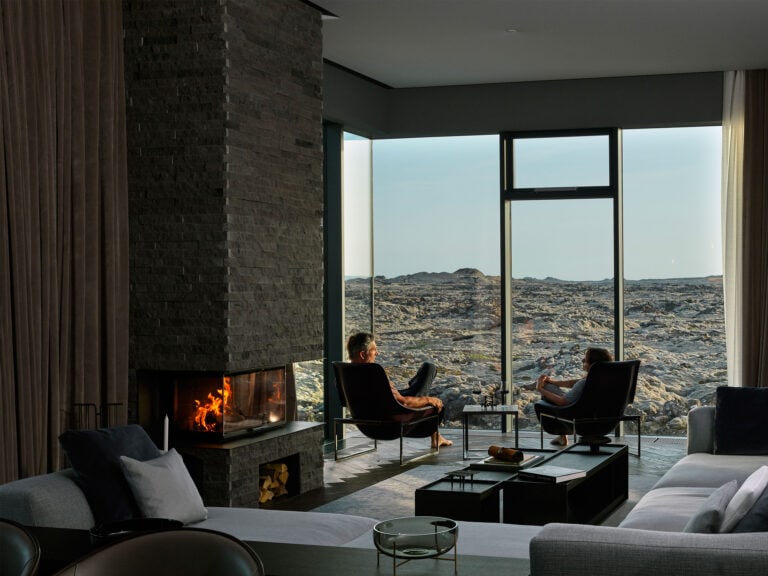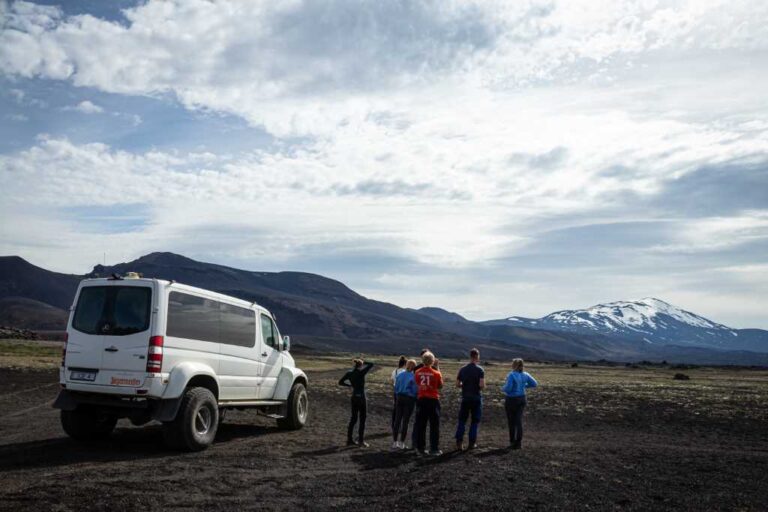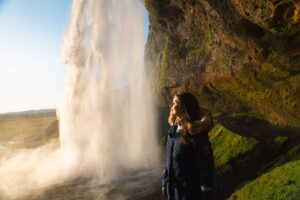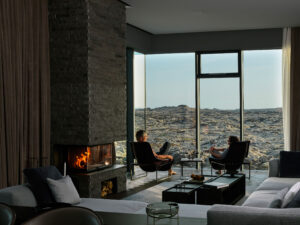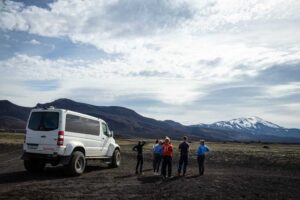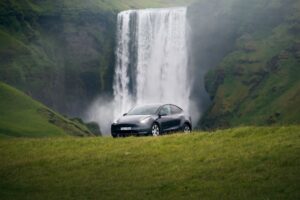The Aurora Borealis is a magnificent natural phenomenon that illuminates Iceland’s night skies for over seven months each year. The opportunity to witness this spectacular display draws countless high-end travellers annually. Indeed, experiencing the magical Aurora is a must for discerning visitors.
While Iceland is one of the premier destinations for viewing this surreal light show, sightings of the Northern Lights are never guaranteed. Meticulous planning and patience are essential, coupled with extensive local knowledge and attention to optimal conditions. Naturally, a touch of luck also plays a significant role in this elusive spectacle.
To enhance your chances of witnessing the marvellous Northern Lights, we’ve curated an exclusive guide. From the best locations and ideal times of year to the perfect conditions for Aurora hunting, we’ve covered all aspects to help you experience this breathtaking phenomenon in Iceland.
- The Ideal Conditions to See the Northern Lights
- The Best Time to See the Northern Lights in Iceland
- How Long Should You Stay in Iceland to See the Northern Lights?
- Aurora Forecast in Iceland
- Best Places for Northern Lights Hunting
- Our Favourite Northern Lights Spots Around Iceland
- The Best Places to See the Aurora in Reykjavík
- Essential Clothing to Pack for Chasing the Northern Lights
- Local Insider Tips
- How to Photograph the Northern Lights
- What to Do If You Don’t See the Northern Lights?

The Ideal Conditions to See the Northern Lights
Several factors affect the optimum chance of seeing the Northern Lights in Iceland. Sadly, you can’t book a trip to Iceland in the winter and automatically expect to catch sight of the lights.
First and foremost, the location and time are crucial. It’s not enough to visit Iceland during the right season. Succeeding in your goal of witnessing the Northern Lights requires some other conditions to be met. Therefore, the length of your stay is an important factor. The longer you stay, the more likely the following factors will align so that you can see the aurora.
Perfect Location: The Auroral Zone
Iceland is one of the best places in the world to see the Auroras. You need to know, however, what places the lights appear the most and where to see the lights at their most magnificent. The Northern Lights are caused by geomagnetic storms. Finding where these storms occur is key to seeing the lights at their most brilliant. Geometric storms are measured by a scale called the Kp index. A reading of 0 means minimal activity, whereas nine means a lot of activity. In general, the higher the reading, the further south you’ll be able to witness the Northern Lights.
Typically, the storms have a magnitude of between Kp1 and Kp3. In Scandinavia, this means that the Northern Lights are only visible at a latitude of around 66°N & 69°N.
However, note that even when the predicted Kp rating is 0, you may still spot the lights if you are right in the middle of the Auroral Zone. A Kp0 rating means little activity from geomagnetic storms, not zero activity. Therefore, residual activity can result in small-scale localized sightings.
Iceland benefits from being right in the Auroral Zone. Its prime position means it can observe the lights for over half of the year.

High Solar Activity
Solar activity is also vital for seeing the Aurora Borealis. While impossible to precisely predict, studying the weather forecast along with Northern Lights forecast applications and websites can help to increase the chances of seeing the lights.
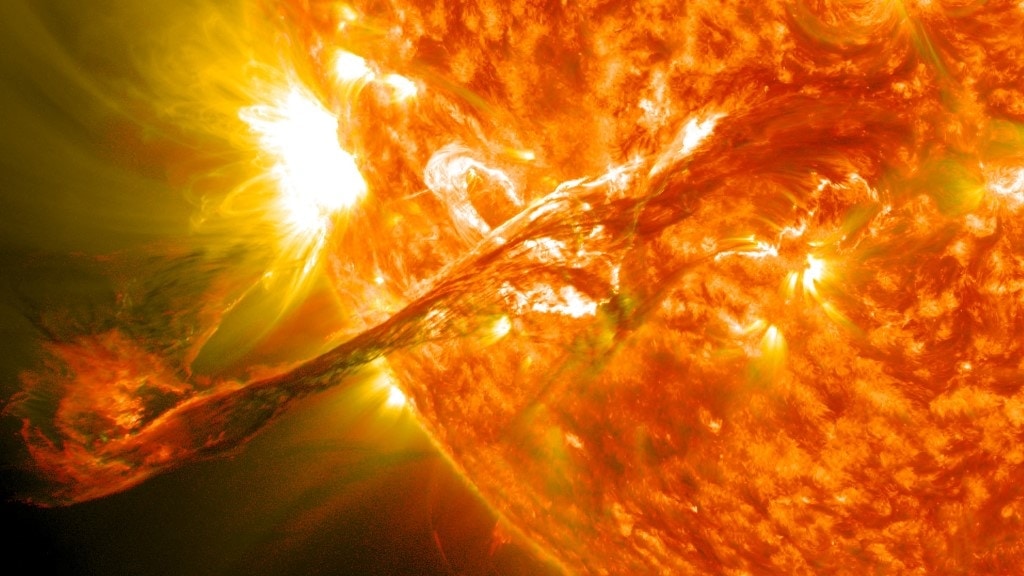
Dark Sky
Although the conditions that cause the lights (charged particles) to occur at any time of the day or night, it’s impossible to see the effects when the sun shines brightly. Sunlight renders the lights invisible. The aurora forecast can be perfect, but without a dark sky, you won’t be able to witness the exciting natural phenomenon. This means that the lights are less visible at night with a full moon and when there is lots of light pollution.
There are more chances of seeing the lights in more remote destinations than in highly illuminated cities, for example. You will enjoy the Northern Lights much more intensely with less pollution to distract your eyes.
Clear Sky
In addition to plenty of solar activity and dark skies, you need the sky to be clear to appreciate the Northern Lights. The lights can be dancing brightly, but if obscured by cloud cover, you sadly won’t be able to see them. A few clouds are fine, but the dense cover is not. Conveniently, many Aurora forecast applications also provide details of cloud cover forecasts.

A safe viewpoint
The flat ground at a higher elevation with nothing obstructing the view is typically the ideal location to spot the lights. At times, the lights hang low over the horizon, meaning that mountains or buildings can interrupt your view. Ideally, seeing a bigger amount of the sky enables you to experience the lights at their best.
You should also be aware of safety considerations. Not only is it dangerous to stop at the roadside at night, but it is also illegal. You should always find a safe place to park. If walking to a viewpoint, ensure you have a torch and sturdy footwear. There’s no point tripping in the dark and injuring yourself, especially in a remote area.

The Best Time to See the Northern Lights in Iceland
The aurora season in Iceland is between late August and early April. As you can only see the Northern Lights in darkness, it’s impossible to see them during Iceland’s bright summers. Iceland is, after all, famous for its summer midnight sun and winter light shows.
The best time to see the Northern Lights in Iceland is when you have the perfect combination of long dark nights and optimum weather conditions.
Between November and February, the middle of winter sees the longest nights, with some 18 to 21 hours of darkness. This is, however, the stormiest and rainiest time of year in Iceland too.
The months on either side of this period, in September and March, have the prime weather conditions for glimpsing the lights and long dark nights.
While September and March are usually the optimum times for seeing the magical Aurora in Iceland, you still need luck to experience the mystical light show. There is never any guarantee of being able to enjoy the lights.
Solar activity has 11-year cycles. Each cycle has an active and inactive phase. The last solar maximum happened around 2013. In 2023, we’re heading towards the next solar maximum, predicted to happen around 2024, with Aurora displays getting more frequent. It also means the lights will appear more intensely and vibrantly as we reach the cycle’s peak.
To reiterate, because the magical Aurora Borealis is an act of nature, it is difficult to predict where and when the lights will appear accurately. Indeed, because visibility depends on solar activity, it can be hard to make predictions more than two hours beforehand. While it’s possible to guess the number of sunspots, it’s impossible to know precisely when or how often the lights will show. You should plan to be flexible and able to set off quickly when Aurora hunting in Iceland.
At What Time Are the Northern Lights the Most Active?
Although people commonly ask when the lights are most active, there’s no straightforward answer.
The sun sets at different times every month, meaning that darkness also falls at different times depending on the month. For example, it’s fully dark after 5 pm in December, whereas in September, it doesn’t become dark until after 9 pm. Due to the altitude, there can be further fluctuations in sunset times between the northern and southern parts of the country.
In addition, periods close to sunset and sunrise still have residual or appearing light in the skies that will prevent optimal viewing experiences.
In short, you should always wait until it’s fully dark before trying to spot the Northern Lights. Of course, you can start driving toward the general area and grab dinner beforehand, but don’t set off with the expectation of seeing the lights until it’s completely dark.
How Long Should You Stay in Iceland to See the Northern Lights?
As already mentioned, you’ll have a better chance of seeing the Northern Lights the longer you stay in Iceland. With a shorter trip of, for example, two or three days, you may, of course, strike lucky. Unfortunately, you might be unlucky with the weather conditions or solar activity.
Spending ten-plus days in Iceland during the Aurora season gives you the best opportunity to witness the fascinating phenomenon. There’s a high chance you’ll be able to admire the Northern Lights on at least one night of your stay. (Plus, there are many other excellent things to enjoy in Iceland, so it’s not as though you’re going to be sitting around bored, just waiting for lights to show!)
Aurora Forecast in Iceland
It’s now possible to predict the Earth’s geomagnetic activity via NASA’s weather stations in space. However, such predictions are typically less reliable than regular meteorological weather forecasts.
Below in this article, you’ll find our forecast of the local cloud cover and the aurora conditions for a general overview of what to expect. This information comes directly from the Icelandic Met Office.
The map of Iceland shows the forecast for cloud cover. Green areas are cloudy and white areas have clear skies.
The spectacle of Aurora Borealis requires dark and partly clear skies. Move the slider below the cloud cover map to alter the date and time.
You can view the forecast three days in advance, but remember that the further you look, the less you can rely on the forecast. You’ll find the times for sunset and moonrise as well as the strength of solar activity.
As detailed previously, the Kp index shows the predicted Aurora strength. In Iceland, the most common ratings are 3 and 4, indicating good chances of seeing bright lights on a clear night.
Best Places for Northern Lights Hunting
There’s no specific top place to see the Northern Lights in Iceland. Almost anywhere with good sky visibility is a potentially great place to enjoy the Aurora Borealis. Avoid places with tall buildings, mountains, or anything else that could obstruct your view.
Traveling around Iceland during the Aurora season gives you the best chances of being able to see the Northern Lights. Plus, you’ll also be able to enjoy many of Iceland’s other natural wonders.
Wherever you stay, you can see the lights if the conditions are right. However, if you stay in a city or town, you should head away from the light pollution and explore the countryside to maximize your light-hunting chances.
If you stay in the countryside, you likely won’t need to drive anywhere. Simply step outside and gaze skywards.
Don’t worry if you don’t have transportation—you can book a Northern Lights guided tour and trust locals to take you to the best spots.
South Iceland
South Iceland is the most-visited part of the country. It’s also the most accessible area and the most famous part of Iceland. It’s also a good choice for people wanting to witness the lights in all their glory. And, if you don’t happen to catch the lights, you’ll still be able to enjoy many of Iceland’s well-known natural splendors, including Gullfoss, Geysir, and Thingvellir National Park.
The Snæfellsnes Peninsula
The famous Snaefellsnes peninsula in West Iceland is a terrific option for travelers who want to experience remote countryside without going too far away from the capital city. Additionally, the peninsula is home to some of Iceland’s most unique natural features. There are plenty of charming hotels and guesthouses along the flat coastal areas, with little in the way to ruin the views of the night sky.
The Highlands
The gorgeous Icelandic Highlands offer one of the most unique vantage points for seeing the Northern Lights. The rugged wilderness boasts some amazing places to be dazzled by the natural light show, including while soaking in hot springs like Kerlingarfjöll and Landmannalaugar. Although only accessible by guided tour, the experience is out of this world.
North Iceland
North Iceland gets less precipitation than southern Iceland or around Reykjavik, so there’s more chance of a clear sky. Also, being further north, this region is closer to the Arctic Circle, which means longer hours of darkness over the winter. If solitude is what you seek, it’s tough to beat North Iceland.
East Iceland
East Iceland is the country’s least-visited region. That certainly doesn’t mean that the area is lacking when it comes to things to see and do, though! If you love heating away from the tried-and-trodden track and enjoying authentic adventures, East Iceland is the perfect place to go Aurora hunting.
Our Favourite Northern Lights Spots Around Iceland
While you can see the Northern Lights all around Iceland, we’ve listed some of our favorite places to enjoy the stunning lights.
On the Golden Circle Route: Þingvellir National Park
Thingvellir National Park on the Golden Circle route is a significant site when it comes to geology due to being the place where the Eurasian and North American tectonic plates meet at the Silfra Drift. It’s also a historically important site, having been the place where the Icelandic Parliament sat between the 10th and 18th centuries. Full of natural beauty, the national park is also a top place to observe the dazzling Northern Lights. With no light pollution, you’ll often find perfectly clear skies over the park.
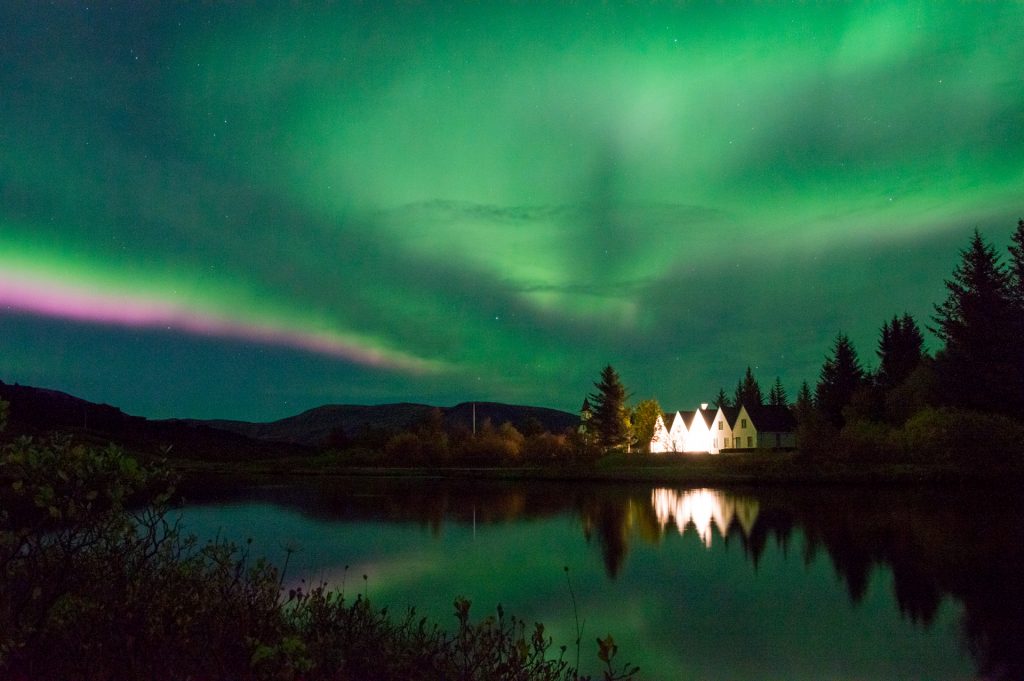
In the South: Jökulsárlón Glacier Lagoon
Far from sources of light pollution, the stunning Jukulsarlon Glacier Lagoon is another brilliant place to admire the Aurora Borealis. Icebergs bob in the glacial lagoon, adding to the scenic wonder. If the lights appear, you’re sure to get the most magnificent photographs.
In the East: Stokksnes Mountain
Stokksnes Mountain is a picture-perfect destination for Aurora spotters in the southeast of Iceland. The beach acts like a mirror when the tide is low, reflecting the dancing lights for a spectacular sight. The outline of the mountains further adds to the awe-inspiring beauty.
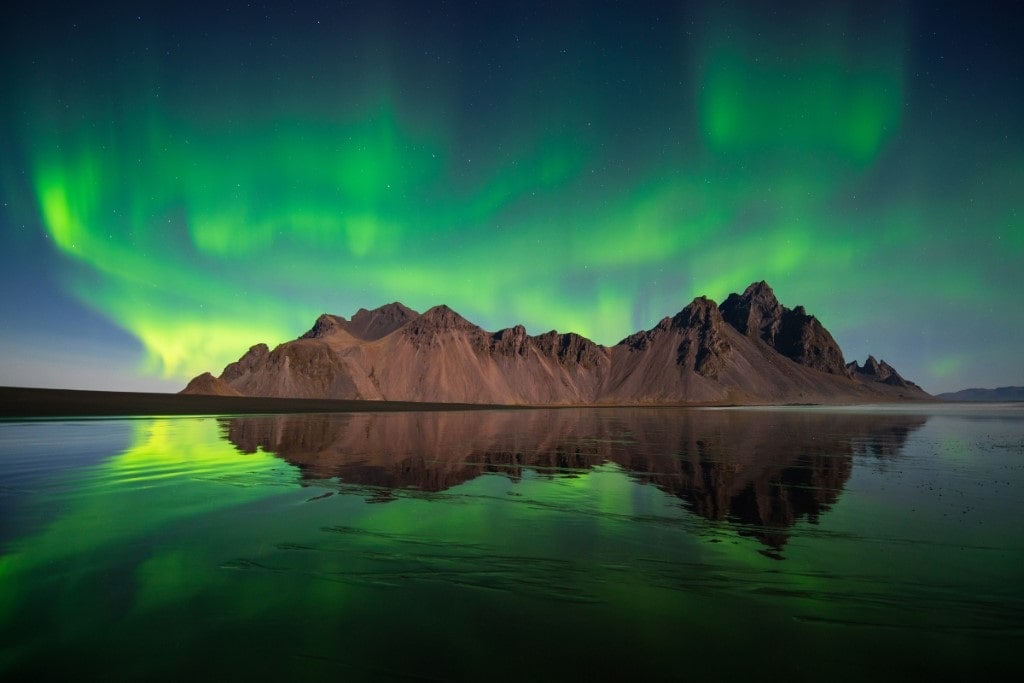
In the North: The Arctic Henge
The Arctic Henge, located in northern Iceland, is one of the country’s most other-worldly destinations. Strangely shaped rocks capture the attention and make terrific photographs whether the Northern Lights appear or not. Although the rocks may look old, you’ll probably be surprised to know that it’s an eye-catching piece of modern art.
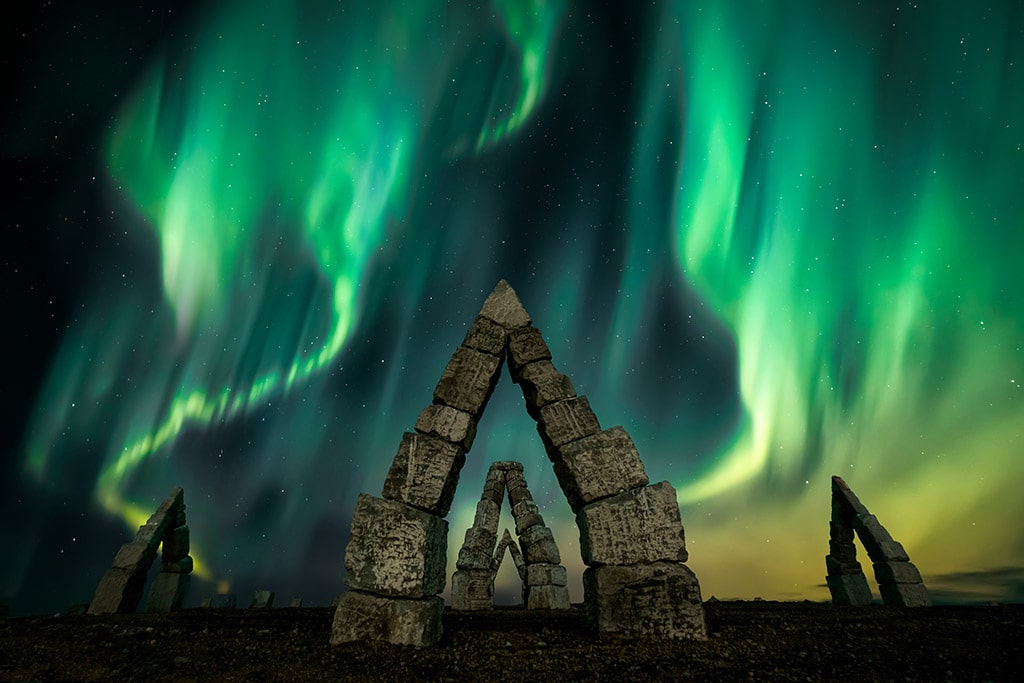
In the West: Kirkjufell Mountain
The striking Kirkjufell Mountain is among the most-snapped landmarks in all of Iceland. The arrowhead mountain shot to fame when it was featured in the popular TV series, Game of Thrones. Waterfalls tumble down the rocks in front of the mountain, and the Northern Lights enhance the existing visual splendor.
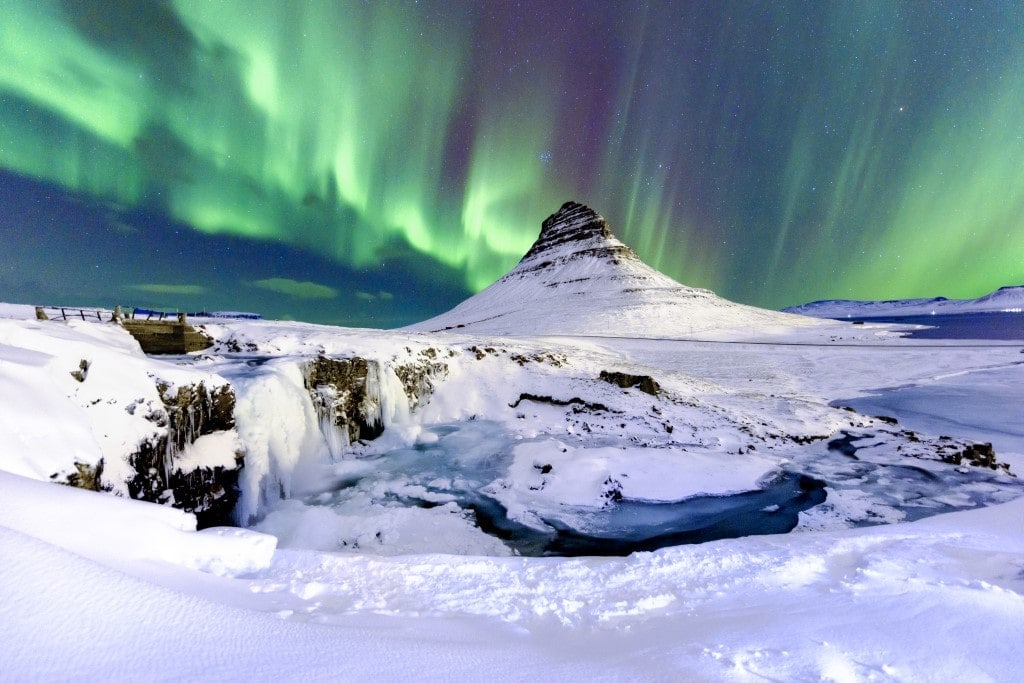
The Best Places to See the Aurora in Reykjavík
Although Iceland’s capital Reykjavik isn’t among the best places in Iceland to see the Northern Lights, that doesn’t mean that it’s impossible to see them in the city. For visitors with little time or who don’t wish to venture out of the city, there are a few places where you may get good views of the Aurora.
In strong conditions, you may even be treated to a peek at the lights right in the heart of the city. For the best opportunities to see the Northern Lights around the capital, try to head to areas with less light pollution. Recommended areas include:
Harpa Conference Hall and the Sun Voyager
If you’re in Reykjavik’s downtown and the Aurora Borealis lights up the sky, head to Harpa Concert Hall or the Sun Voyager sculpture. Located on the coast, it’s one of the easiest and closest places to get away from the city lights.
However, this is only a good spot if the lights come from the north. With the ocean shimmering ahead of you, you’ll be able to gaze up at the lights in almost total darkness. If, on the other hand, the lights are coming from the south, the city lights will make Aurora seem less impressive.
Grótta Lighthouse
There’s a small peninsula on the outskirts of Reykjavik, and at the tip, you’ll find the scenic Grotta Lighthouse. There’s little light pollution, and you can enjoy 180-degree vistas. Locals and tourists flock to one of the most popular places around the capital for viewing the Aurora, hoping to catch a glimpse of the marvelous lights.
Perlan
Sometimes referred to as The Pearl, Perlan is one of the most famous museums in Reykjavik. Located atop a small tree-covered hill, the elevated position provides terrific vistas out over the city. Furthermore, the trees of Ösjkuhlíð Park help to block out light pollution somewhat, meaning you can better see the dazzling Northern Lights overhead.
City Parks in Reykjavík
Although most of Reykjavik’s city parks have many trees, they generally still have a few clear spaces where you can see the sky. Away from the light pollution, they can be great places to enjoy the Northern Lights without having to travel too far outside the heart of the city.
Hljómskálagarður is just a short stroll from the city center, and you can reach Klambratún in a short walk of around 15 minutes. You’ll need a car or cab to reach the larger parks of Laugardalur and Elliðaárdalur, both around a 10 to 15 drive away.
Essential Clothing to Pack for Chasing the Northern Lights
Hunting for the Aurora Borealis can take a fair few hours, so ensuring you are appropriately dressed and equipped is essential for remaining comfortable throughout the night. Keep in mind that you’ll be outdoors most of the time, and you’ll largely be inactive.
Although the nights aren’t super cold in September and October, wearing several layers of clothing is still recommended. The wind can make temperatures seem much colder than they actually are.
From November to April, you’ll need to dress up warm. With nighttime temperatures plummeting to as low as -15°C (14°F), you could end up ill if you’re not dressed suitably for the conditions, not to mention downright cold and miserable!
If you’re planning to go Aurora hunting in the winter, don’t forget to add these items to your packing list:
- Long, warm, and weatherproof (wind and rain) jacket
- Woollen underwear to keep you warm when standing around observing the lights
- Sturdy boots with a rubber sole
- Woollen socks, scarf, gloves, and hat, as well as any other accessories that will help to keep you warm outdoors (for example, ear muffs and balaclava)
- Reusable hand warmers
- Snacks and a thermos of hot drink
- A tripod and remote shutter release (to reduce shake) for the best pictures
- Red-light torch (the red light won’t ruin your pictures)
- Regular torch for walking in the dark
- Extra camera and phone batteries (batteries go flat much faster in cold weather)
- High-visibility vests for children (so you can easily spot them in the dark)
- Electronics to keep kids entertained if they get bored
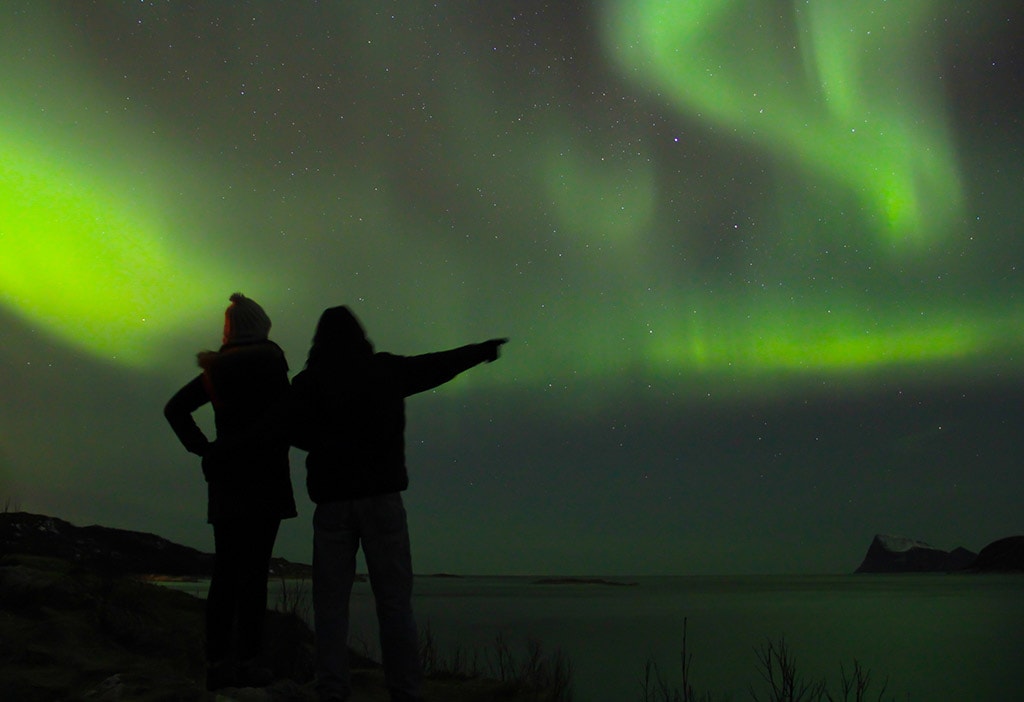
Local Insider Tips
To make your Aurora hunting expeditions have higher chances of success, here are some more handy tips from locals:
- Drive into the countryside to get away from the city lights
- Time your trip to avoid the full moon
- Go out looking for the lights each night of your stay in Iceland if possible
- Join an Aurora-hunting tour
According to locals, joining a guided tour is one of the best ways to increase your chances of seeing the mystical lights. Guides have many years of experience, diligently consult the forecasts, and know the best spots for the ultimate views. Plus, they have the vehicles and experience to drive along routes you may not feel comfortable doing alone.
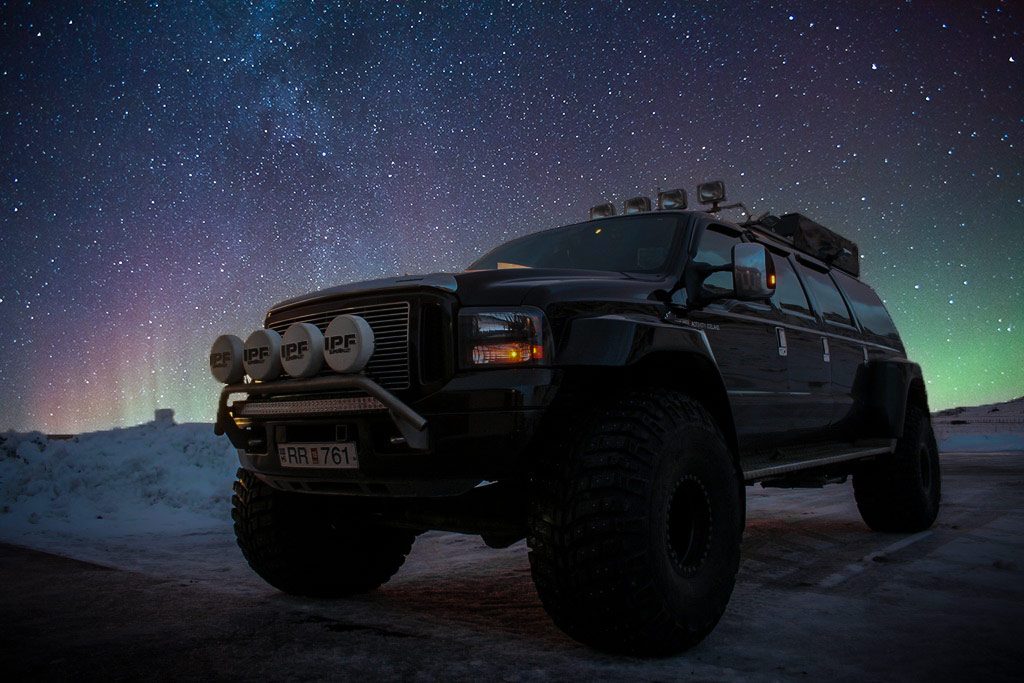
How to Photograph the Northern Lights
Getting amazing shots of the stunning Northern Lights can be quite tricky; it’s not as easy as you may believe.
You’ll be capturing the lights in the darkness, so you will need a longer exposure time. Ideally, you’ll use a DSLR camera with a tripod. Unfortunately, photos taken with a handheld camera won’t be all that good.
Pack spare batteries if yours drain low quickly in the cold temperatures, and make sure you set up your tripod on stable ground. Use a wide-angle lens if possible, as this will capture a greater portion of the sky and also let in as much light as possible.
If you want to snap a person in the darkness, light them up with a flashlight or headlamp. And make sure they stand still; otherwise, they will turn out blurry!
Make use of a camera’s timer function or a remote shutter release if possible. And keep in mind that a high ISO can result in grainy images.
Receiving perfect snaps will be fabulous reminders of your exciting nights under the Northern Lights. You’ll be able to make your friends and followers a bit jealous when they scroll through your social media feed.
If your pictures don’t turn out as you hope, try not to be too disappointed. After all, simply witnessing the incredible lights is a joy and gift—the experience and memories will be with you forever.
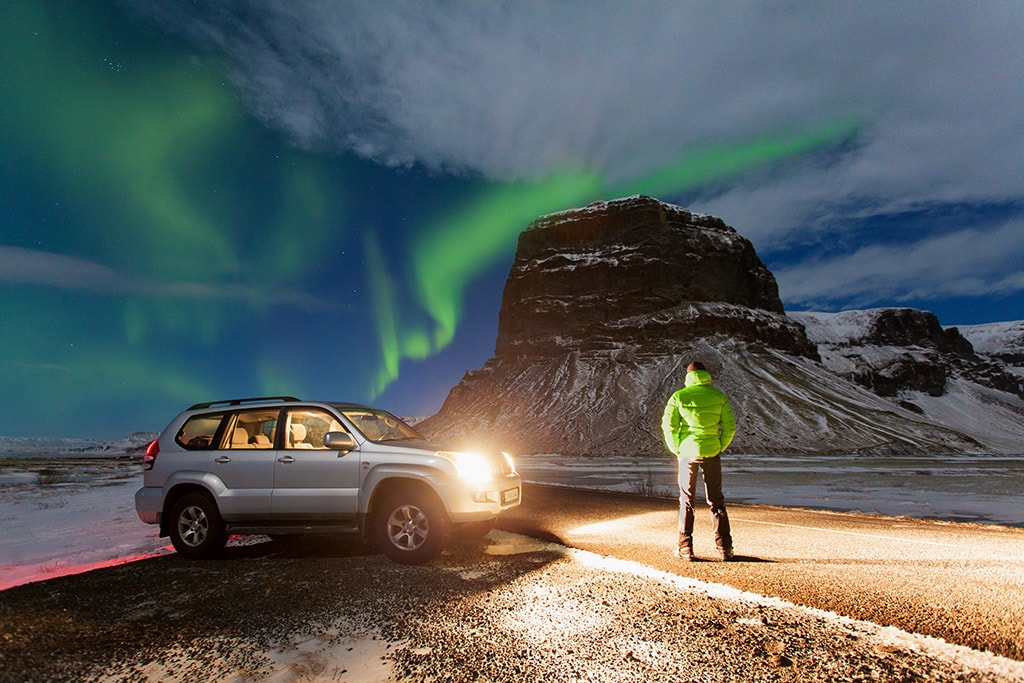
What to Do If You Don’t See the Northern Lights?
Unfortunately, there’s no guarantee that you’ll be able to see the Aurora during your time in Iceland. It’s a natural occurrence—and nobody can control nature!
Learn more about the Northern Lights at the Aurora Museum in Reykjavik. There’s an engaging multimedia exhibition, interesting interactive displays, and cool virtual reality glasses.
Also, in the capital, the Perlan Museum teaches you more about the wondrous phenomena. Watch a 22-minute-long film to see some of the country’s gorgeous landscapes and discover loads of interesting information about the lights.
Even if you are lucky to see the lights during your vacation, these two museums are still well worth a visit.
You may well fall so in love with Iceland in general that you return home all set to book your return flight to experience more Icelandic marvels and do some more Aurora hunting!
